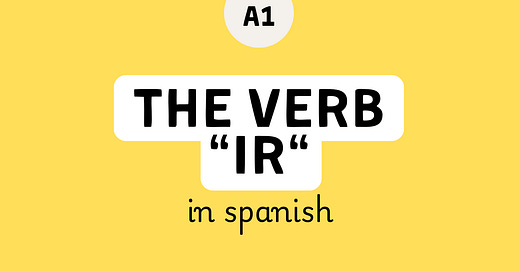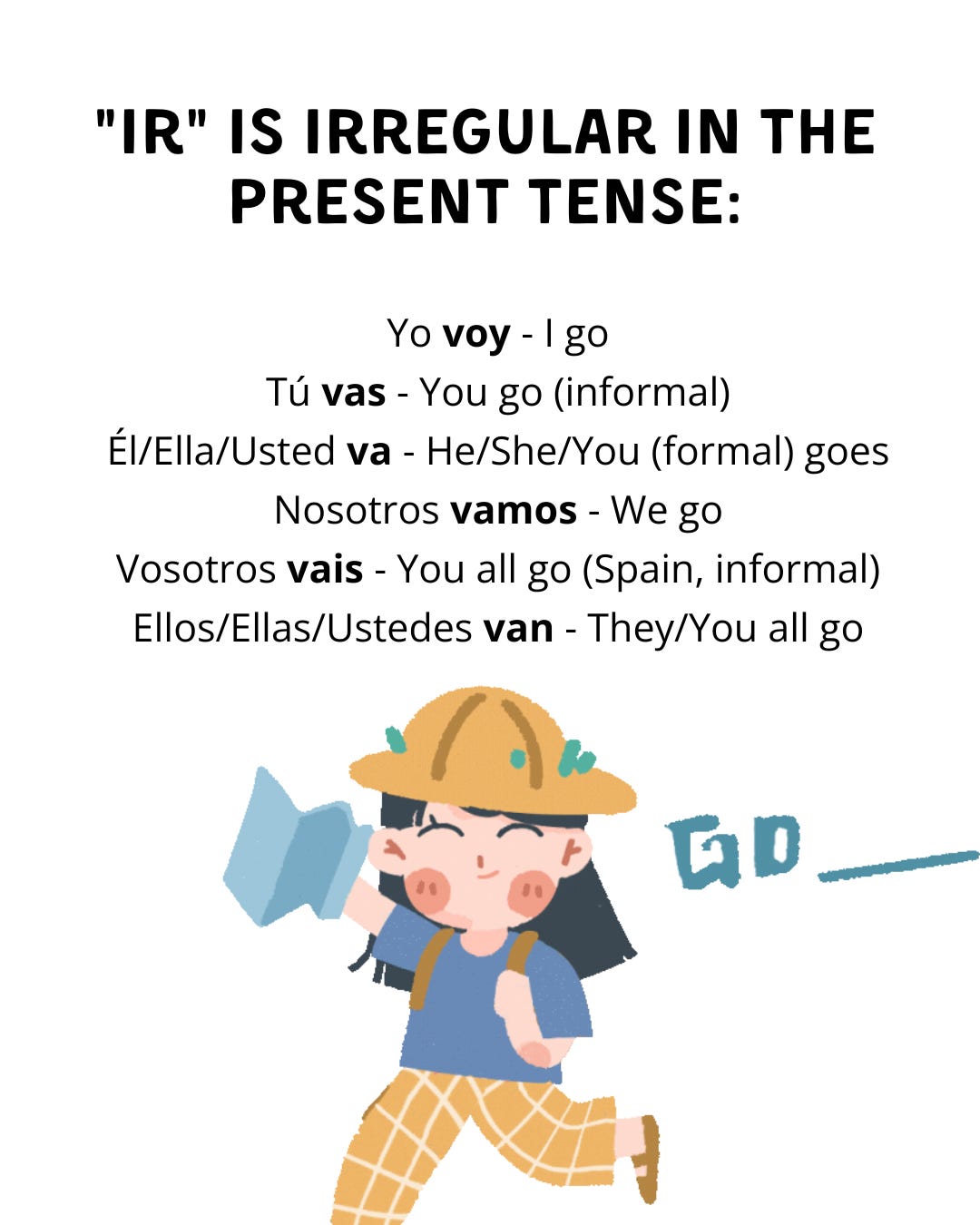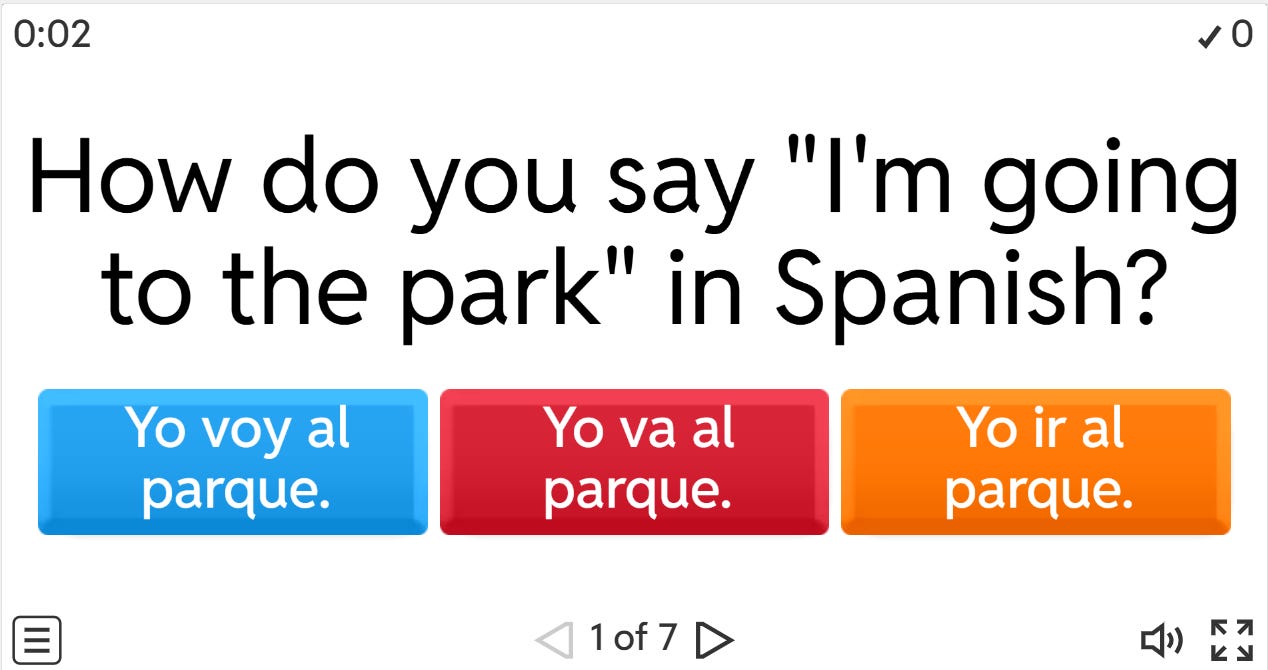The verb "IR" in Spanish (for movement/future plans)
One of the most versatile and essential verbs in Spanish is "ir" (to go). Not only does it express physical movement, but it’s also used to talk about future plans. Let’s break down how to use "ir" in different contexts.
1. Using "Ir" for Movement (Going Places)
The most basic use of "ir" is to indicate movement from one place to another. The structure is:
Subject + Ir (conjugated) + a + Destination
Examples:
Voy al parque. (I’m going to the park.)
¿Vas a la fiesta? (Are you going to the party?)
Ella va al supermercado. (She goes to the supermarket.)
⚠️ Remember:
"a + el" contracts to "al" (Voy al cine).
For feminine places, use "a la" (Voy a la playa).
2. Using "Ir" for Future Plans (Ir + a + Infinitive)
Spanish doesn’t always use a separate future tense—instead, we often use "ir + a + infinitive" to talk about plans, similar to "going to" in English.
Structure:
Subject + Ir (conjugated) + a + Verb (infinitive)
Examples:
Voy a estudiar mañana. (I’m going to study tomorrow.)
¿Vas a viajar este verano? (Are you going to travel this summer?)
Ellos van a comprar una casa. (They’re going to buy a house.)
This structure is very common in everyday conversation and is much simpler than learning all the future tense conjugations!
3. "Ir" with Different Prepositions
Depending on the preposition used, "ir" can express different types of movement or intentions.
a) Ir + a → Destination or Future Action
Vamos a Madrid. (We’re going to Madrid.)
Van a comer. (They’re going to eat.)
b) Ir + en → Means of Transportation
Voy en coche. (I’m going by car.)
¿Vas en tren? (Are you going by train?)
c) Ir + por → Movement Through or Reason for Going
Voy por el parque. (I’m going through the park.)
Va por pan. (He’s going to get bread.)
d) Ir + hacia → Movement Toward Something
Vamos hacia el norte. (We’re heading north.)
El avión va hacia Europa. (The plane is going toward Europe.)
e) Ir + de → Temporary Activities or Roles
Vamos de vacaciones. (We’re going on vacation.)
Va de médico en la obra. (He’s playing a doctor in the play.)
f) Ir + para → Direction or Purpose
Salgo para España mañana. (I leave for Spain tomorrow.)
Este regalo es para ti. (This gift is for you.)
4. Conjugating "Ir" (Present Tense)
Example Sentences:
Nosotros vamos a la fiesta. (We’re going to the party.)
¿Vais al concierto? (Are you all going to the concert?)
5. Common Phrases with "Ir"
Ir de compras – To go shopping
Ir de viaje – To go on a trip
Ir bien/mal – To go well/badly
Irse – To leave (Me voy – I’m leaving)
📸💾 Save the Images!
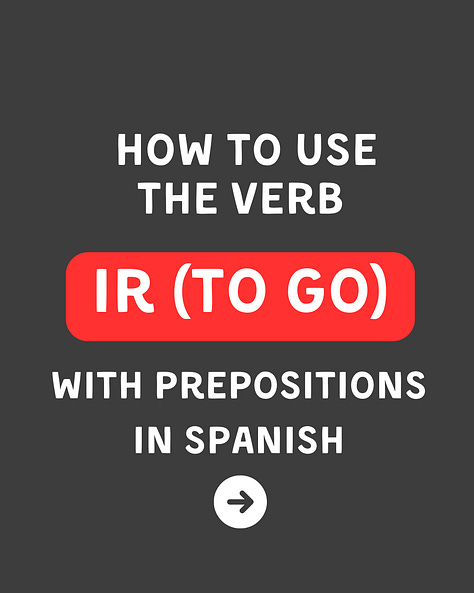
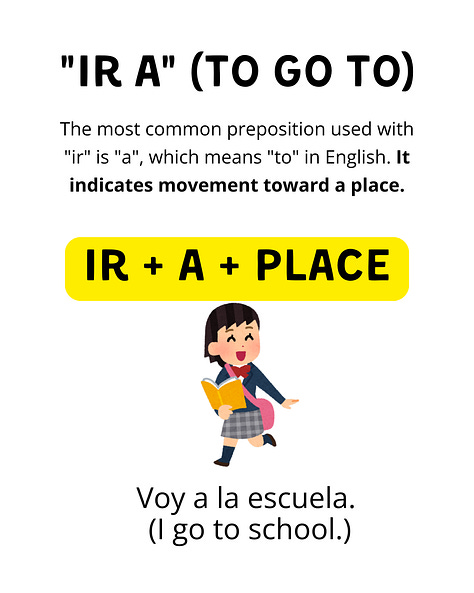
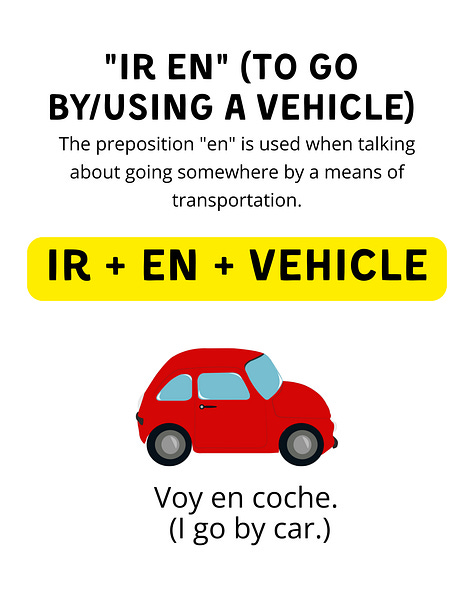
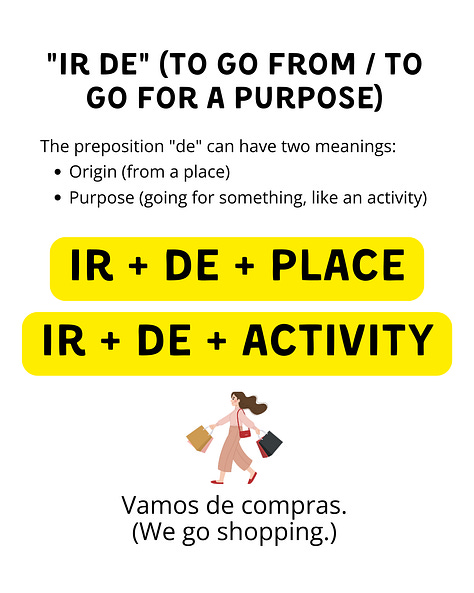
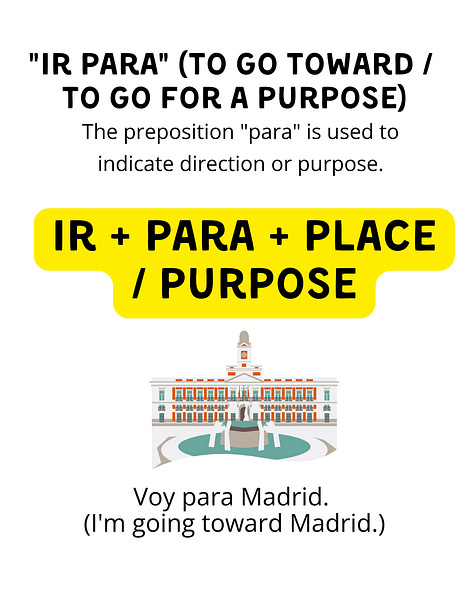
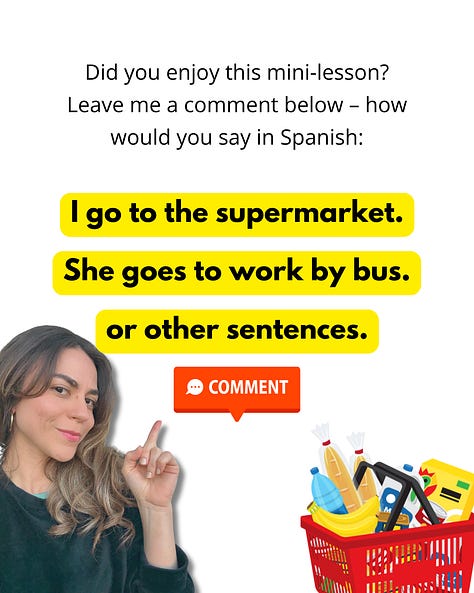
Practice what you learned!
Final Tips
✅ Ir + a + place → Movement
✅ Ir + a + verb → Future plans
✅ Ir + en/por/hacia/de/para → Different meanings based on preposition
Now you can confidently use "ir" in various contexts! 🚀
¿Vas a practicar estos ejemplos? (Are you going to practice these examples?)
Let me know in the comments if you have any questions! 😊


